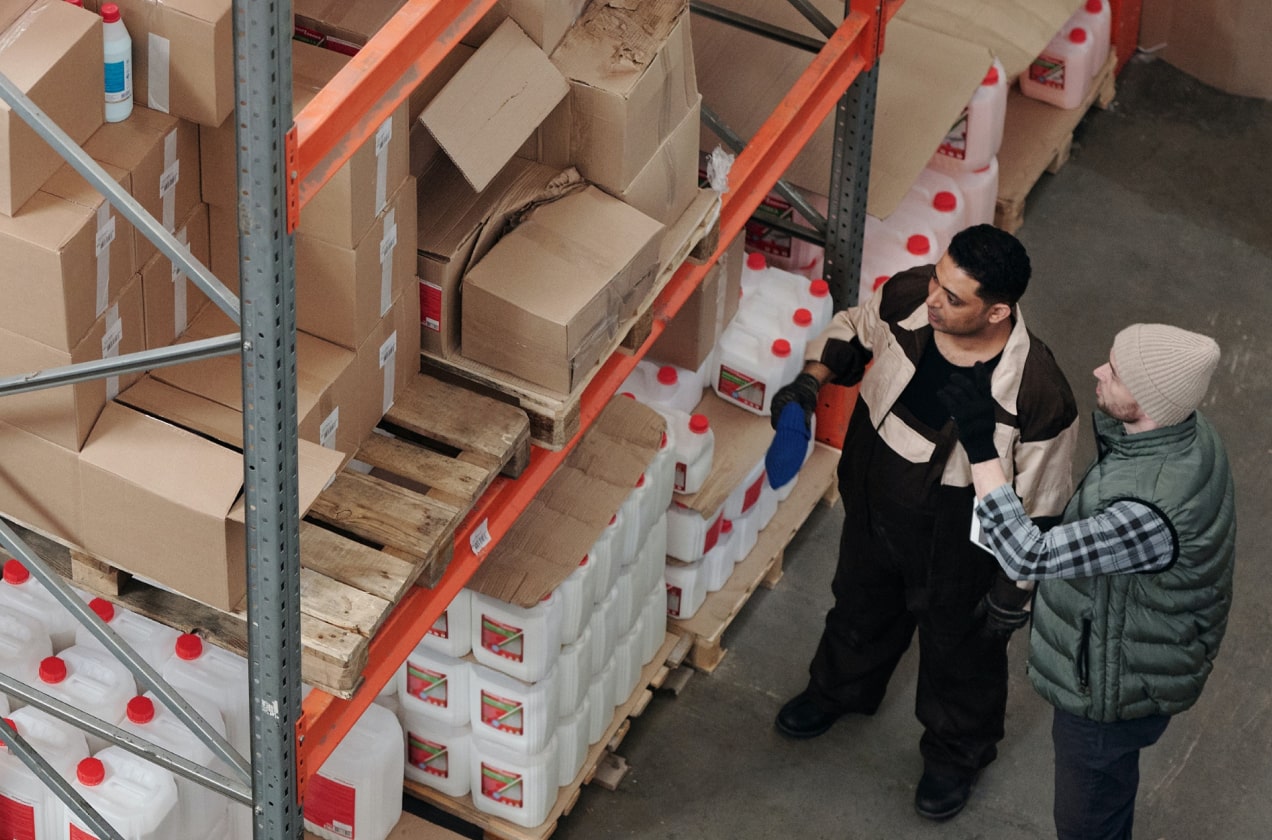In today’s interconnected global economy, the ability to efficiently transport cargo across vast continental regions has become a critical competitive advantage. Whether you’re shipping raw materials from mining operations in remote locations, distributing manufactured goods across multiple countries, or managing supply chains that span entire continents, understanding the complexities of continental-wide cargo transport is essential for business success.
Continental cargo transport involves unique challenges that differ significantly from local or even international shipping. The sheer scale of operations, diverse regulatory environments, varying infrastructure quality, and complex logistics coordination required make this one of the most sophisticated aspects of modern supply chain management.
Understanding Continental Cargo Transport
Defining Continental Scale
Continental-wide cargo transport refers to the movement of goods across large land masses, typically involving multiple countries, time zones, and thousands of kilometers. This includes:
Cross-Continental Corridors
- Trans-European transport networks spanning from Portugal to Poland
- North American freight movement from Mexico to Canada through the United States
- Asian land bridges connecting China to Western Europe via Central Asia
- Pan-African transport routes linking North, East, West, and Southern regions
- South American logistics networks connecting the Atlantic and Pacific coasts
Mega-Regional Trade Zones
- European Union’s integrated transport system
- USMCA (former NAFTA) freight corridors
- ASEAN economic integration transport networks
- African Continental Free Trade Area logistics infrastructure
- Mercosur regional transport agreements
The Scale Challenge
Moving cargo across continental distances presents unique operational challenges:
Distance and Time Management Continental shipments can involve journey times of several weeks, requiring careful coordination of pickup, transit, and delivery schedules across multiple time zones.
Multi-Modal Complexity Continental transport typically requires seamless integration of various transportation modes—road, rail, sea, and air—each with different capabilities, limitations, and cost structures.
Regulatory Complexity Crossing multiple jurisdictions means navigating different customs procedures, safety regulations, environmental standards, and trade policies that can significantly impact transport operations.
Transportation Modes for Continental Cargo
Rail Transport: The Continental Backbone
Rail transport often forms the backbone of continental cargo movement, offering several advantages for large-scale logistics:
High Capacity and Efficiency Modern freight trains can carry the equivalent of hundreds of trucks, making rail highly efficient for bulk cargo movements. A single freight train can transport up to 4,000 tons of cargo, significantly reducing the number of vehicles needed for continental transport.
Environmental Benefits Rail transport produces approximately 75% fewer greenhouse gas emissions per ton-kilometer compared to road transport, making it the most environmentally sustainable option for continental cargo movement.
Cost Effectiveness for Long Distances While rail may have higher initial setup costs, it becomes increasingly cost-effective as distances increase, particularly for shipments over 500 kilometers.
Key Continental Rail Networks
- Trans-Siberian Railway: Connecting Europe to Asia via Russia, covering over 9,000 kilometers
- China-Europe Railway Express: Multiple routes connecting Chinese cities to European destinations
- North American Class I Railroads: Extensive networks covering the United States, Canada, and Mexico
- European Rail Freight Corridors: Integrated networks facilitating efficient cross-border rail transport
Road Transport: Flexibility and Last-Mile Connectivity
Road transport provides essential flexibility and connectivity for continental cargo operations:
Door-to-Door Service Trucks can provide complete door-to-door service, eliminating the need for additional handling and transshipment that other modes require.
Time-Sensitive Deliveries Road transport offers the flexibility to adjust routes and schedules in real-time, making it ideal for time-critical cargo.
Integration with Other Modes Trucks serve as essential connectors, providing first-mile pickup and last-mile delivery services for rail and sea transport.
Continental Trucking Considerations
- Driver regulations: Managing hours-of-service requirements across different jurisdictions
- Vehicle standards: Ensuring trucks meet varying weight, size, and emission requirements
- Cross-border procedures: Navigating customs and immigration processes efficiently
- Fuel and maintenance: Planning for fuel stops and maintenance across long routes
Inland Waterways: Hidden Continental Highways
Often overlooked, inland waterway transport plays a crucial role in continental cargo movement:
Major Continental Waterway Systems
- European Inland Waterways: Rhine-Main-Danube corridor connecting the North Sea to the Black Sea
- North American Great Lakes-St. Lawrence Seaway: Connecting the Atlantic Ocean to the Great Lakes
- Chinese Inland Waterways: Yangtze River and Grand Canal systems
- South American River Systems: Amazon, Paraná, and Orinoco river networks
Advantages of Inland Waterways
- High capacity: Barges can carry enormous loads at relatively low cost
- Energy efficiency: Most fuel-efficient mode of transport per ton-kilometer
- Reduced traffic congestion: Takes pressure off road and rail networks
- Lower infrastructure costs: Requires less infrastructure investment than building new roads or railways
Air Cargo: Speed for High-Value Goods
While expensive, air cargo plays a vital role in continental transport for specific types of goods:
Time-Critical Shipments
- Perishable goods requiring rapid transport
- Just-in-time manufacturing components
- Emergency medical supplies and equipment
- High-value, low-weight products
Continental Air Cargo Networks Major cargo airlines operate extensive hub-and-spoke networks that efficiently connect continental regions, with cargo hubs strategically located to optimize continental distribution.
Infrastructure Considerations
Transportation Infrastructure Quality
The success of continental cargo transport heavily depends on infrastructure quality and connectivity:
Road Infrastructure
- Highway systems: Availability of high-capacity highways suitable for heavy freight
- Border crossings: Efficiency of customs and immigration facilities
- Truck stops and services: Availability of fuel, maintenance, and rest facilities
- Weight restrictions: Understanding and planning for varying weight limits
Rail Infrastructure
- Track gauge compatibility: Ensuring railcars can operate across different rail systems
- Electrification: Compatibility between electric and diesel operations
- Loading facilities: Availability of appropriate terminals and handling equipment
- Maintenance standards: Reliability and safety of rail infrastructure
Intermodal Facilities
- Container terminals: Efficient transfer points between different transport modes
- Cargo handling equipment: Availability of cranes, forklifts, and specialized handling gear
- Storage facilities: Temporary storage capabilities for cargo in transit
- Information systems: Technology for tracking and managing intermodal transfers
Digital Infrastructure
Modern continental cargo transport relies heavily on digital infrastructure:
Communication Networks Reliable internet and mobile communications are essential for tracking shipments, coordinating operations, and managing documentation across continental distances.
GPS and Tracking Systems Satellite-based tracking enables real-time monitoring of cargo location and condition throughout continental journeys.
Electronic Data Interchange (EDI) Standardized electronic communication between different parties in the supply chain reduces paperwork and speeds up processes.
Regulatory and Compliance Framework
Cross-Border Regulations
Continental cargo transport must navigate complex regulatory environments:
Customs Procedures
- Documentation requirements: Proper preparation of commercial invoices, packing lists, and certificates of origin
- Duty and tax calculations: Understanding applicable tariffs and tax obligations
- Prohibited and restricted goods: Awareness of items that cannot cross certain borders
- Transit procedures: Special arrangements for goods crossing multiple countries
Transportation Regulations
- Driver licensing: Ensuring drivers have appropriate licenses for each jurisdiction
- Vehicle standards: Meeting different safety and emission standards
- Hours of service: Complying with driver rest requirements
- Hazardous materials: Special procedures for dangerous goods transport
Trade Agreements and Preferences Understanding how continental trade agreements affect cargo transport:
- Free trade zones: Taking advantage of preferential treatment
- Customs unions: Simplified procedures within integrated economic areas
- Transit agreements: Special arrangements for goods crossing multiple borders
- Mutual recognition agreements: Acceptance of standards and certifications across borders
Environmental Regulations
Continental transport must comply with varying environmental standards:
Emission Standards Different regions have different vehicle emission requirements that affect equipment selection and routing decisions.
Carbon Pricing Some regions have implemented carbon pricing mechanisms that affect the cost calculation for continental transport.
Noise Restrictions Urban areas along continental routes may have noise restrictions that affect delivery timing and routing.
Technology Solutions for Continental Transport
Transportation Management Systems (TMS)
Advanced TMS platforms designed for continental operations provide:
Route Optimization AI-powered algorithms consider multiple factors including distance, fuel costs, tolls, driver regulations, and border crossing times to determine optimal routes.
Multi-Modal Planning Integration of different transport modes to create efficient continental transport chains.
Real-Time Visibility Comprehensive tracking and monitoring capabilities across all modes of transport and geographic regions.
Document Management Automated generation and management of the complex documentation required for continental transport.
Internet of Things (IoT) and Sensor Technology
IoT devices provide valuable data throughout continental journeys:
Cargo Condition Monitoring Sensors monitor temperature, humidity, shock, and other environmental factors critical for sensitive cargo.
Vehicle Performance Tracking Monitoring fuel consumption, engine performance, and maintenance needs across long continental routes.
Security Monitoring Advanced security systems detect unauthorized access and provide real-time security alerts.
Blockchain for Continental Logistics
Blockchain technology addresses trust and transparency challenges in continental transport:
Document Authentication Immutable records ensure the authenticity of shipping documents across multiple jurisdictions.
Supply Chain Transparency All parties can access trusted information about cargo location, condition, and ownership.
Smart Contracts Automated execution of agreements based on predefined conditions, reducing delays and disputes.
Economic Considerations
Cost Structure Analysis
Continental cargo transport involves complex cost considerations:
Distance-Based Costs
- Fuel costs: Major component that varies significantly across continental routes
- Driver costs: Including wages, accommodation, and compliance with hours-of-service regulations
- Tolls and fees: Road tolls, border crossing fees, and administrative charges
- Insurance: Coverage for cargo and liability across multiple jurisdictions
Time-Based Costs
- Inventory carrying costs: Cost of capital tied up in goods during long continental transits
- Storage costs: Temporary storage during intermodal transfers or delays
- Demurrage and detention: Costs associated with delays in returning equipment
Mode-Specific Considerations Different transport modes have different cost structures and economic advantages at different distances and cargo types.
Risk Management
Continental transport involves unique risks that require specialized management:
Political and Economic Risks
- Currency fluctuations: Managing exposure to multiple currencies
- Political instability: Contingency planning for political disruptions
- Trade policy changes: Adapting to changes in trade agreements and tariffs
- Economic sanctions: Ensuring compliance with international sanctions regimes
Operational Risks
- Infrastructure failures: Contingency planning for breakdowns in critical infrastructure
- Weather disruptions: Managing seasonal weather patterns across continental regions
- Security threats: Protecting cargo from theft and terrorism
- Regulatory changes: Staying current with evolving regulations across multiple jurisdictions
Best Practices for Continental Cargo Transport
Planning and Preparation
Comprehensive Route Analysis Successful continental transport begins with thorough analysis of available routes, considering factors such as:
- Total transit time including border crossings
- Infrastructure quality and reliability
- Regulatory requirements and compliance costs
- Risk factors and mitigation strategies
Stakeholder Coordination Effective communication and coordination with all stakeholders:
- Shippers and consignees: Clear communication of expectations and requirements
- Transport providers: Selection of reliable partners with continental expertise
- Customs brokers: Professional assistance with regulatory compliance
- Insurance providers: Appropriate coverage for continental risks
Documentation Preparation Meticulous preparation of all required documentation:
- Commercial documents: Accurate invoices, packing lists, and contracts
- Regulatory documents: Permits, licenses, and certificates
- Transport documents: Bills of lading, waybills, and delivery instructions
- Insurance documents: Policies and certificates of coverage
Operational Excellence
Real-Time Monitoring and Communication Implementing systems for continuous monitoring and communication throughout continental journeys:
- Tracking systems: Real-time location and condition monitoring
- Communication protocols: Regular updates and proactive communication
- Exception management: Rapid response to delays or problems
- Customer service: Providing customers with visibility and updates
Quality Assurance Maintaining high service quality across continental distances:
- Performance metrics: Measuring on-time delivery, cargo condition, and customer satisfaction
- Continuous improvement: Regular review and optimization of processes
- Training programs: Ensuring all personnel understand continental transport requirements
- Technology updates: Staying current with technological advances
Regional Specifics and Considerations
North America
USMCA Integration The United States-Mexico-Canada Agreement facilitates continental trade with streamlined procedures for qualifying goods.
Class I Railroad Networks Extensive rail networks provide efficient continental connectivity, with major carriers offering coast-to-coast and border-to-border service.
Trucking Regulations Complex web of federal and state/provincial regulations requires careful compliance management.
Europe
Single Market Benefits The European Union’s single market eliminates many barriers to continental transport, with standardized procedures and mutual recognition of standards.
Cabotage Restrictions Regulations limiting domestic transport by foreign carriers affect continental transport planning.
Environmental Initiatives Aggressive environmental policies drive innovation in clean transport technologies and may affect routing and equipment decisions.
Asia
Belt and Road Initiative China’s massive infrastructure investment program is creating new continental transport corridors connecting Asia to Europe and beyond.
Economic Integration Growing economic integration in regions like ASEAN is simplifying continental transport procedures.
Infrastructure Development Rapid infrastructure development is creating new opportunities but also requires adaptation to changing conditions.
Africa
Continental Free Trade Area The African Continental Free Trade Area is creating opportunities for continental transport while working to address infrastructure challenges.
Infrastructure Investment Major infrastructure projects are improving continental connectivity, but quality and reliability vary significantly.
Regional Economic Communities Various regional groups are working to harmonize transport regulations and procedures.
Future Trends in Continental Cargo Transport
Technology Integration
Autonomous Vehicles Self-driving trucks and trains could revolutionize continental transport by reducing labor costs and improving safety.
Hyperloop Technology Ultra-high-speed ground transport could dramatically reduce continental transport times for certain corridors.
Advanced Analytics AI and machine learning will enable more sophisticated optimization of continental transport networks.
Sustainability Initiatives
Alternative Fuels Hydrogen, electric, and other clean technologies will become increasingly important for continental transport.
Carbon Pricing Growing implementation of carbon pricing mechanisms will affect transport mode selection and routing decisions.
Circular Economy Principles of circular economy will influence how continental transport networks are designed and operated.
Infrastructure Development
Smart Infrastructure Connected and intelligent infrastructure will provide better information and control for continental transport operations.
Intermodal Integration Improved integration between different transport modes will create more efficient continental networks.
Public-Private Partnerships Collaboration between public and private sectors will drive infrastructure investment and innovation.
Conclusion
Continental-wide cargo transport represents one of the most complex and challenging aspects of modern logistics. Success requires a deep understanding of multiple transport modes, regulatory environments, and technological solutions. As global trade continues to grow and evolve, the ability to efficiently move cargo across continental distances will become increasingly critical for business competitiveness.
The future of continental cargo transport lies in the intelligent integration of technology, sustainability, and operational excellence. Companies that invest in advanced planning systems, build strong partnerships, and maintain focus on continuous improvement will be best positioned to succeed in this challenging but rewarding field.
Whether you’re managing supply chains for a multinational corporation or planning logistics for a growing business, understanding the complexities and opportunities of continental cargo transport will help you make better decisions and achieve better results in our interconnected global economy.
The continental highways of commerce are constantly evolving, driven by technological innovation, infrastructure development, and changing trade patterns. Those who master the art and science of continental cargo transport will find themselves at the forefront of global logistics, connecting markets, and enabling economic growth across vast distances and diverse regions.


